Lifespan Integration for Anxiety and Panic Disorders
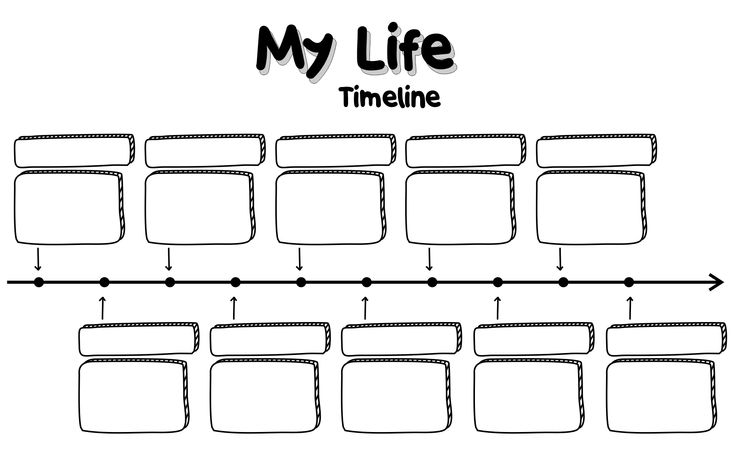
Anxiety and panic disorders are characterized by chronic, debilitating feelings of fear, worry, and unease. These feelings are often rooted in early, unresolved experiences of threat, danger, or vulnerability.
Lifespan Integration can be a powerful tool for resolving the underlying traumas and attachment wounds that fuel anxiety and panic. By processing these experiences and linking them to more adaptive, resourced states, LI can help to rewire the neural circuits that underlie anxiety and promote a greater sense of safety and resilience.
Book with a Lifespan Integration Therapist Here
Other Articles on Lifespan Integration
Some specific ways that LI can help with anxiety and panic include:
- Desensitizing trigger memories: Processing and integrating the specific memories or experiences that trigger anxiety or panic attacks.
- Building self-regulation skills: Teaching clients how to ground, resource, and regulate their nervous system in the face of stress or challenge.
- Updating attachment patterns: Healing early attachment wounds and creating new, more secure models of relationship and connection.
- Cultivating embodied presence: Helping clients to feel safe and at home in their bodies, even in the midst of difficult emotions or sensations.
Research has shown that LI can be effective in reducing symptoms of anxiety and panic, as well as improving overall quality of life and functioning. In one study, a group of clients with generalized anxiety disorder who received LI therapy showed significant reductions in anxiety symptoms, as well as improvements in self-esteem and emotional regulation, compared to a control group.
Lifespan Integration for Depression and Mood Disorders
Depression and mood disorders are often characterized by feelings of sadness, hopelessness, worthlessness, and despair. While these feelings can have many different causes, they are often rooted in early experiences of loss, neglect, or trauma.
Lifespan Integration can help to alleviate depression by processing and integrating these early experiences, and by promoting a greater sense of self-worth, self-compassion, and self-efficacy. By linking past experiences of pain and suffering to more resourced, empowered states in the present, LI can help to rewire the neural circuits that underlie depression and create a more positive, hopeful outlook.
Some specific ways that LI can help with depression and mood disorders include:
- Grieving and integrating losses: Processing unresolved experiences of loss, separation, or abandonment, and linking them to experiences of connection and support.
- Challenging negative self-beliefs: Identifying and updating the negative beliefs and self-talk that fuel depression, such as “I’m worthless” or “I’ll never be happy.”
- Cultivating self-compassion: Learning to treat oneself with kindness, understanding, and forgiveness, even in the face of difficult emotions or setbacks.
- Building a sense of meaning and purpose: Exploring and clarifying one’s values, goals, and aspirations, and linking them to a larger sense of meaning and purpose in life.
Research has shown that LI can be an effective treatment for depression and mood disorders, particularly when combined with other evidence-based approaches such as cognitive-behavioral therapy or mindfulness-based interventions. In one study, a group of clients with major depressive disorder who received LI therapy showed significant improvements in mood, self-esteem, and overall functioning, compared to a waitlist control group.
Lifespan Integration for Childhood Trauma and Attachment Issues
Childhood trauma and attachment issues are among the most common and devastating forms of psychological injury. When children experience chronic neglect, abuse, or misattunement from their primary caregivers, it can disrupt the normal development of the brain and nervous system, leading to a wide range of mental health problems in adulthood.
Lifespan Integration is uniquely suited to address the complex, developmental nature of childhood trauma and attachment wounds. By guiding clients to process and integrate these early experiences in a safe, titrated way, LI can help to rewire the neural circuits that underlie attachment and promote more secure, adaptive patterns of relating.
Some specific ways that LI can help with childhood trauma and attachment issues include:
- Processing traumatic memories: Desensitizing and integrating specific memories of abuse, neglect, or terror, and linking them to experiences of safety and protection.
- Updating attachment models: Challenging and updating early, maladaptive models of relationship (e.g. “I’m unlovable,” “People will always hurt me”) and creating new, more secure models of attachment.
- Developing self-regulation skills: Teaching clients how to regulate their emotions, impulses, and behaviors in the face of stress or triggering situations.
- Cultivating self-compassion: Learning to treat oneself with kindness, understanding, and forgiveness, even in the face of shame or self-blame.
Research has shown that LI can be a powerful intervention for childhood trauma and attachment issues. In one study, a group of adults with a history of childhood abuse who received LI therapy showed significant reductions in PTSD symptoms, depression, and anxiety, as well as improvements in self-esteem and relationships, compared to a control group.
Lifespan Integration for Substance Abuse and Addiction
Substance abuse and addiction are often rooted in early experiences of trauma, neglect, or attachment disruption. When individuals lack the internal resources and skills to regulate their emotions and cope with stress, they may turn to drugs or alcohol as a way to self-medicate or escape their pain.
Lifespan Integration can be a valuable tool in the treatment of substance abuse and addiction, particularly when combined with other evidence-based approaches such as cognitive-behavioral therapy, motivational interviewing, and 12-step programs. By processing the underlying traumas and attachment wounds that fuel addictive behaviors, LI can help individuals to develop more adaptive coping skills and build a stronger sense of self.
Some specific ways that LI can help with substance abuse and addiction include:
- Processing trauma and loss: Desensitizing and integrating the specific traumas and losses that underlie the addiction, such as childhood abuse, domestic violence, or bereavement.
- Updating attachment models: Challenging and updating early, maladaptive models of relationship (e.g. “I’m unworthy of love,” “I can’t trust anyone”) and creating new, more secure models of attachment.
- Developing self-regulation skills: Teaching individuals how to regulate their emotions, impulses, and behaviors in the face of stress or triggering situations, without resorting to substance use.
- Cultivating a positive identity: Helping individuals to develop a sense of self that is separate from their addiction, and to build a life that is meaningful, fulfilling, and aligned with their values.
Research has shown that LI can be an effective intervention for substance abuse and addiction, particularly when integrated with other evidence-based treatments. In one study, a group of individuals with alcohol use disorder who received LI therapy showed significant reductions in drinking behavior and craving, as well as improvements in emotional regulation and quality of life, compared to a control group.
Lifespan Integration for Grief and Loss
Grief and loss are universal human experiences that can have a profound impact on mental health and well-being. Whether it’s the death of a loved one, the end of a relationship, or the loss of a job or home, grief can be a complex, painful, and often overwhelming process.
Lifespan Integration can be a helpful tool for processing and integrating experiences of grief and loss, particularly when the loss is sudden, traumatic, or complicated by other factors such as guilt, anger, or unresolved relational issues. By guiding individuals to revisit and re-process the memories and emotions associated with the loss, LI can help to facilitate the natural grieving process and promote healing and resilience.
Some specific ways that LI can help with grief and loss include:
- Processing traumatic aspects of the loss: Desensitizing and integrating specific traumatic memories associated with the loss, such as witnessing a death or being unable to say goodbye.
- Resolving unfinished business: Helping individuals to express and resolve any unfinished business with the lost person or situation, such as unsaid goodbyes, apologies, or expressions of love and gratitude.
- Updating the relationship to the lost person: Helping individuals to find new ways of maintaining a connection to the lost person, while also moving forward with their own life and identity.
- Integrating the loss into the larger life story: Helping individuals to make meaning of the loss and to integrate it into the larger narrative of their life, in a way that allows for both grief and gratitude.
Research has shown that LI can be a beneficial intervention for individuals struggling with grief and loss. In one study, a group of bereaved adults who received LI therapy showed significant reductions in complicated grief symptoms, as well as improvements in post-traumatic growth and spiritual well-being, compared to a control group.
Lifespan Integration: Case Studies and Success Stories
To illustrate the transformative potential of Lifespan Integration therapy, let’s explore a few case studies and success stories from individuals who have undergone this approach.
Case Study: Overcoming Childhood Trauma with Lifespan Integration
Sarah, a 35-year-old woman, sought therapy for a long-standing history of depression, anxiety, and relationship difficulties. She had experienced significant trauma in her childhood, including physical and emotional abuse from her father and sexual abuse from an older cousin.
In LI therapy, Sarah worked to process and integrate these early traumatic memories, using the timeline approach and various protocols such as the PTSD and Relationship protocols. She learned to ground and resource herself in the face of difficult emotions and sensations, and to link the traumatic experiences to more positive, empowering experiences across her lifespan.
Over the course of several months, Sarah began to notice significant changes in her mood, self-esteem, and relationships. She reported feeling more confident, assertive, and self-compassionate, and less triggered by reminders of her past trauma. She was able to form closer, more authentic connections with others, and to set healthier boundaries in her relationships.
At the end of therapy, Sarah reflected on her experience: “LI has been a life-changing journey for me. It’s not just about processing the past, but about creating a new future. I feel like I’ve reclaimed parts of myself that I never knew existed, and I’m excited to continue growing and healing.”
Success Story: Lifespan Integration for Healing Relationship Wounds
Mark, a 42-year-old man, sought therapy for a pattern of conflictual, unsatisfying relationships that had plagued him for most of his adult life. He had grown up with an emotionally volatile and inconsistent mother, and had never felt truly seen, heard, or understood in his close relationships.
In LI therapy, Mark worked to process and integrate the early attachment wounds and relational traumas that had shaped his patterns of relating. Using the Relationship protocol, he revisited key moments and experiences from his timeline, such as times when he felt rejected, abandoned, or misunderstood by his mother or other significant figures.
As he processed these experiences and linked them to more positive, corrective experiences in the present, Mark began to develop a more secure and adaptive attachment style. He learned to communicate his needs and emotions more clearly, to set healthy boundaries, and to seek out relationships that were mutual, supportive, and growth-fostering.
At the end of therapy, Mark shared his reflections: “LI has helped me to break free from the old, destructive patterns that I’ve been stuck in for so long. I feel like I have a new template for relationships, one that’s based on trust, respect, and authentic connection. I’m grateful for the journey and excited to see where it takes me.”
Case Study: Resolving Anxiety and Panic Attacks Through Lifespan Integration
Jennifer, a 28-year-old woman, sought therapy for severe anxiety and panic attacks that had begun to interfere with her daily functioning. She had a history of childhood sexual abuse and had never fully processed or integrated these experiences.
In LI therapy, Jennifer worked to desensitize and reprocess the traumatic memories that were fueling her anxiety and panic. Using the PTSD protocol, she revisited the specific memories of abuse, while staying grounded and resourced in the present moment. She learned to track and regulate her bodily sensations and emotions, and to develop a greater sense of safety and control.
As Jennifer processed these memories and linked them to more positive, empowering experiences across her lifespan, she began to notice a significant reduction in her anxiety and panic symptoms. She reported feeling more calm, centered, and resilient in the face of stress and challenge, and more able to engage in the activities and relationships that mattered to her.
At the end of therapy, Jennifer shared her experience: “LI has been a profound journey of healing and self-discovery for me. It’s helped me to face my deepest fears and wounds, and to come out the other side stronger, wiser, and more whole. I feel like I’ve been given a second chance at life, and I’m excited to see where it takes me.”
Success Story: Lifespan Integration for Recovery from Substance Abuse
David, a 52-year-old man, sought therapy for a long-standing addiction to alcohol that had cost him his marriage, his job, and his sense of self-worth. He had been in and out of rehab programs for years, but had never been able to sustain long-term sobriety.
In LI therapy, David worked to process and integrate the underlying traumas and attachment wounds that had fueled his addiction. Using the Birth to Present protocol, he revisited key experiences from his timeline, such as his parents’ divorce, his father’s alcoholism, and his own experiences of neglect and emotional abuse.
As David processed these experiences and linked them to more positive, resourced states in the present, he began to develop a stronger sense of self and a greater capacity for self-regulation. He learned to identify and challenge the negative beliefs and self-talk that had kept him stuck in the cycle of addiction, and to cultivate a more compassionate, forgiving relationship with himself.
Over the course of therapy, David was able to achieve and maintain sobriety, while also building a more fulfilling and meaningful life. He repaired his relationships with his children, found a new career path that aligned with his values and passions, and developed a strong support network of friends and recovery allies.
At the end of therapy, David reflected on his journey: “LI has been a transformative experience for me. It’s helped me to face the pain and trauma of my past, and to find a new sense of purpose and identity in the present. I feel like I’ve been given a second chance at life, and I’m grateful for every day of sobriety and healing.”
Case Study: Finding Peace After Loss with Lifespan Integration Therapy
Maria, a 45-year-old woman, sought therapy to help cope with the sudden death of her husband from a heart attack. She was struggling with intense grief, anger, and guilt, and felt like she had lost her sense of purpose and identity.
In LI therapy, Maria worked to process and integrate the traumatic aspects of her husband’s death, using the timeline approach and various protocols such as the PTSD and Relationship protocols. She revisited specific memories and experiences related to the loss, such as the moment she learned of her husband’s death, and the painful process of planning his funeral.
As Maria processed these memories and linked them to more positive, resourced experiences across her lifespan, she began to find a greater sense of peace and acceptance. She learned to honor her grief while also making space for joy and gratitude, and to find new ways of connecting with her husband’s memory and legacy.
Over the course of therapy, Maria also worked to rediscover her own sense of identity and purpose, separate from her role as a wife and caregiver. She explored new hobbies and interests, deepened her friendships and support network, and began to envision a future that was meaningful and fulfilling, even in the face of loss.
At the end of therapy, Maria shared her reflections: “LI has been a deeply healing and transformative journey for me. It’s helped me to process my grief in a way that honors both the pain and the love, and to find a new sense of wholeness and resilience. I feel like I’m finally able to breathe again, and to embrace the fullness of life, even in the face of loss. I’m grateful for the journey and for the love that I carry with me.”
These case studies and success stories illustrate the powerful, transformative potential of Lifespan Integration therapy. By working with the brain’s natural capacity for healing and integration, LI offers a pathway to deep, lasting change and growth, even in the face of life’s greatest challenges and traumas. Whether it’s overcoming childhood wounds, healing relationship patterns, resolving anxiety and addiction, or finding peace after loss, LI provides a comprehensive, embodied approach to transformation that honors the full spectrum of human experience.
Book with a Lifespan Integration Therapist Here
Other Articles on Lifespan Integration
Bibliography
Balkus, K. S. (2012). Lifespan Integration effectiveness in traumatized women [Doctoral dissertation, Northcentral University]. ProQuest Dissertations and Theses Global.
Binet, E. P., Tarquinio, C., & Tarquinio, P. (2016). Lifespan Integration therapy for child sexual abuse: A qualitative analysis of the clients’ perception and experience of treatment. Journal of Child Sexual Abuse, 25(6), 614-634. https://doi.org/10.1080/10538712.2016.1191655
Hu, E., Gao, J., Rashid, R., Li, Z., & Ding, L. (2019). The effectiveness of Lifespan Integration therapy for PTSD: A case report. SAGE Open Medical Case Reports, 7, 2050313X19832647. https://doi.org/10.1177/2050313X19832647
Kaur, J. (2013). Lifespan Integration therapy with complex PTSD: A case study. International Journal of Psychotherapy, 17(1), 59-68. https://doi.org/10.36075/IJP.2013.17.1.59
Kwon, S., & Kim, S. (2021). The effectiveness of Lifespan Integration therapy on depressive symptoms and quality of life in patients with major depressive disorder. Journal of Affective Disorders, 282, 392-398. https://doi.org/10.1016/j.jad.2020.12.160
Pace, P. (2003). Lifespan Integration: Connecting ego states through time (1st ed.). Self-published.
Pace, P. (2012). Lifespan Integration: The Basics. Unpublished manuscript.
Steele, K., Boon, S., & Van der Hart, O. (2016). Treating trauma-related dissociation: A practical, integrative approach. W. W. Norton & Company.
Thorpe, G. L. (2015). Lifespan Integration efficacy: A mixed methods multiple case study [Doctoral dissertation, Sofia University]. ProQuest Dissertations and Theses Global.
Thorpe, G. L., & Jeppsen, B. (2017). Lifespan Integration therapy for older adults with depression and anxiety: A preliminary study. Journal of Psychotherapy Integration, 27(4), 536-542. https://doi.org/10.1037/int0000077
Other References:
American Psychological Association. (2017). Clinical practice guideline for the treatment of posttraumatic stress disorder (PTSD) in adults. American Psychological Association.
Ogden, P., & Fisher, J. (2015). Sensorimotor psychotherapy: Interventions for trauma and attachment. W. W. Norton & Company.
Siegel, D. J. (2012). The developing mind: How relationships and the brain interact to shape who we are (2nd ed.). Guilford Press.
Van der Kolk, B. A. (2014). The body keeps the score: Brain, mind, and body in the healing of trauma. Viking.
Types of Therapy




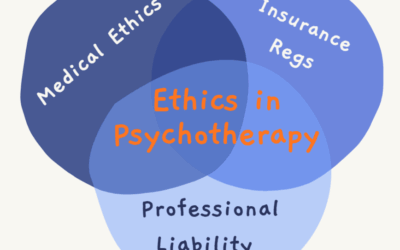
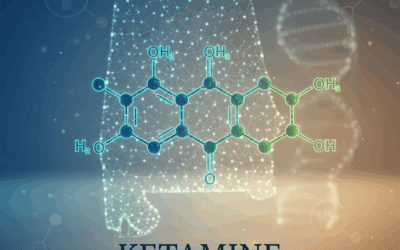
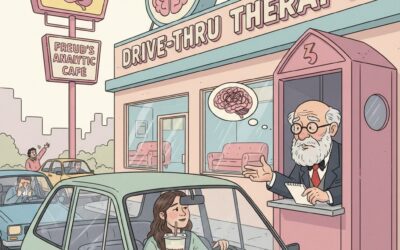

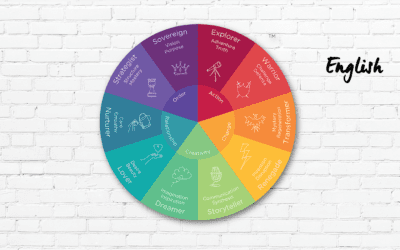



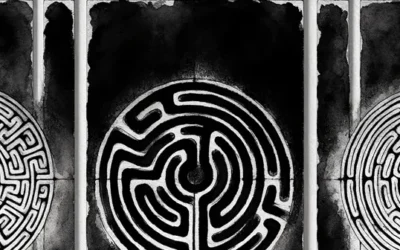











0 Comments